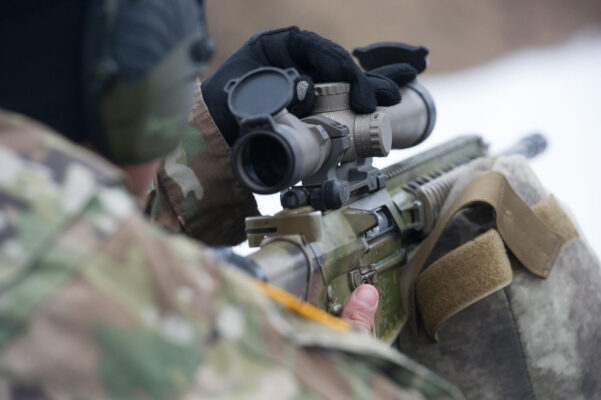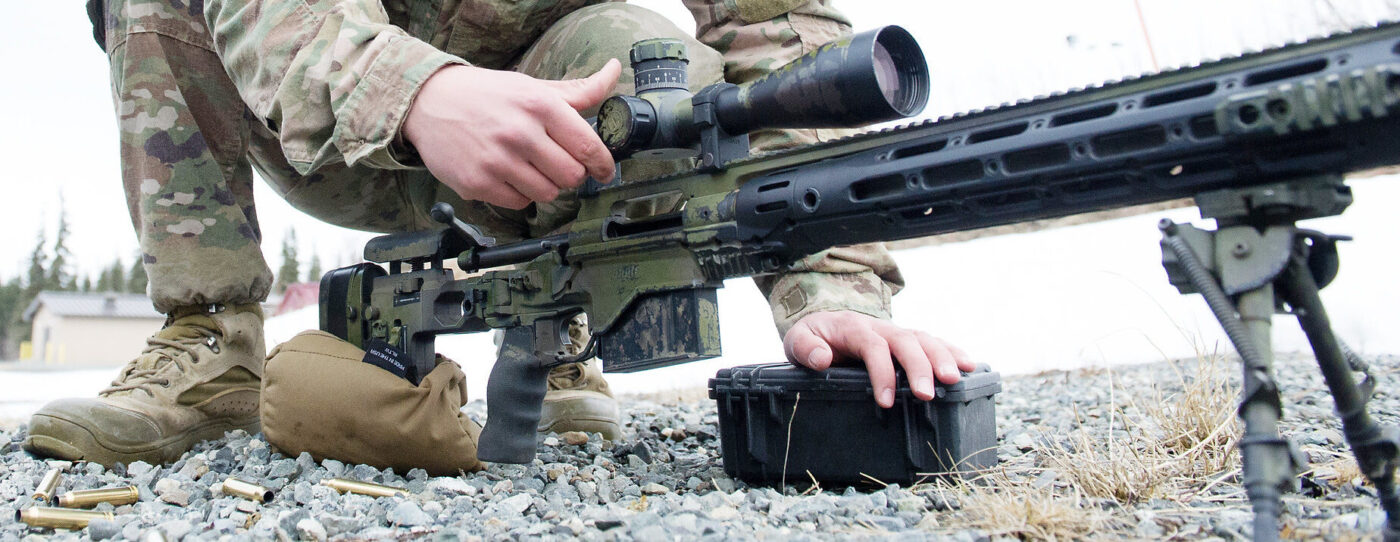A properly adjusted rifle scope will help you aim more accurately and shoot with greater power.
In this article, we will go over how to adjust a rifle scope. We’ll cover things like adjusting elevation and windage, as well as what tools you need for the job!
Table of Contents
What You Need to Set a Scope
When adjusting a scope, you’ll need to know the objective distance, eyepiece distance, and parallax setting. The objective distance is the distance from the scope’s front to the object you’re aiming at. The eyepiece distance is the distance from your eye to the scope’s eyepiece. And lastly, the parallax setting compensates for errors in aim due to differences in viewing angle.
How to Adjust a Scope
The first step to adjusting a rifle scope is finding the reticle. The reticle can be seen through the lens of the telescopic sight and should appear as either a fine crosshair or as dots and posts.
To find the reticle, align the ocular lens with your eye so that you are looking at a light-colored wall or surface. Then rotate your scope until you see both the walls and a clear image of the reticle.
To adjust a rifle scope, you need an adjustment screwdriver with hexagonal projections on either end of a metal rod with a ball tip on one end and a flat blade screwdriver on the other.
The second step is to choose the direction you want to adjust your rifle scope in. There are four directions: Left, Right, Up, and Down.
To determine which way to turn the adjustment screws:
- Hold the rifle to point straight ahead and level with your eye looking down at the sight at a blank wall or surface.
- Look through your site and notice which direction lines up best with arrow indicators on both sides of your reticle without adjusting at all. Remember this point, as we will refer to it later when making adjustments.

The third step of rifle scope adjustment is finding an appropriate target for sighting in your rifle. Aim at the center mass of your target and adjust your scope so that it is in focus. You should see the reticle sitting exactly on top of the bullseye or in the exact middle of your target.
Once you are set up with an appropriate rifle sighting in, go ahead and adjust. Adjusting a rifle scope is easiest when looking through the sight near dusk or dawn, both because light intensity changes throughout the day and also these are times where shadows are less pronounced.
As mentioned before, there are four possible directions to adjust – left, right, up (or higher), down (or lower). The goal here is to move the reticle within the frame of your target until it appears exactly over the center of the target. This way, once you shoot, your bullet will hit exactly where the reticle is pointing at.
Scope Adjustment Which Way to Turn: Tips
When it comes to making adjustments to your rifle scope, it’s important to take your time and ensure that everything is just right. Here are some tips to help you make the most of your adjustments:
1. Make sure that you clearly understand how your rifle scope works. This includes knowing how to adjust the windage and elevation and understanding the different reticles available.
2. Always use a level when adjusting the windage and elevation. A level will help ensure that your shots are accurate.
3. Be patient. Don’t try to make too many changes at once; take your time and make gradual tweaking until you’re happy with the results.
4. Consider purchasing a higher-end rifle scope. While these are more expensive than regular scopes, they will make your experience much better.
5. Ensure that your rifle is secured during the setup process. It’s always better to be safe than sorry.
6. Keep checking your scope after adjustments are made to ensure accuracy between shots remains consistent throughout the day due to changing environmental factors such as snow, rain, fog, etc.
Summary
If the adjustments don’t seem to affect it, it might be that your rifle scope is not calibrated correctly. In this case, you should take it to a professional gunsmith for further assistance.

